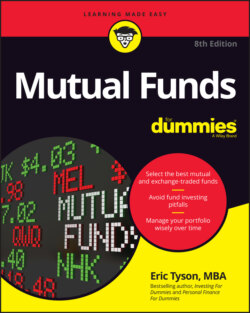Читать книгу Mutual Funds For Dummies - Eric Tyson - Страница 90
Understanding Exchange-Traded Funds
ОглавлениеFor many years after their introduction in the 1970s, index mutual funds got little respect and money. Various pundits and those folks with a vested financial interest in protecting the status quo, such as firms charging high fees for money management, heaped criticism on index funds. (As I explain in Chapter 13, index funds replicate and track the performance of a particular market index, such as the Standard & Poor’s 500 index of 500 large-company U.S. stocks.) Critics argued that index funds would produce subpar returns. Investors who’ve used index funds have been quite happy to experience their funds typically outperforming about 70+ percent of the actively managed funds over extended time periods.
In recent years, increasing numbers of financial firms have developed exchange-traded funds (ETFs). Most ETFs are, essentially, index funds with one major difference: They trade like stocks on a stock exchange. The first ETF was created and traded on the American Stock Exchange in 1993 and tracked the Standard & Poor’s 500 index. Now thousands of ETFs trade, comprising about $7 trillion — a large sum indeed — which is about 26 percent of the total invested in mutual funds.
Before you decide to invest in ETFs, take a moment to read this section. It explains the advantages and disadvantages of investing in ETFs and helps you wade through the many ETFs to find the best ones for you.
